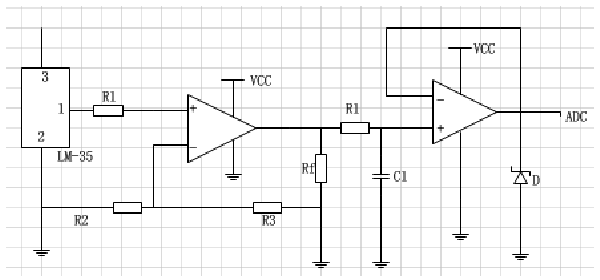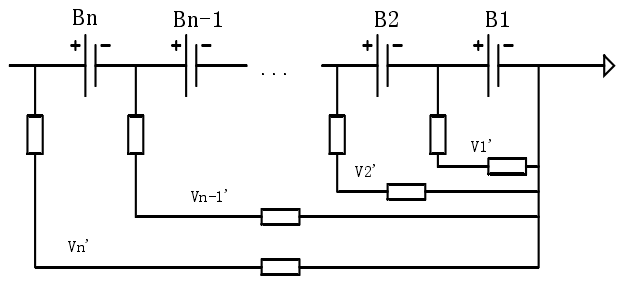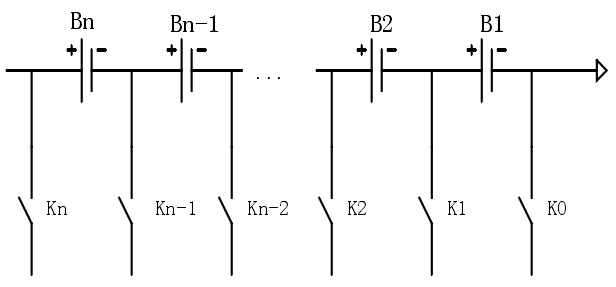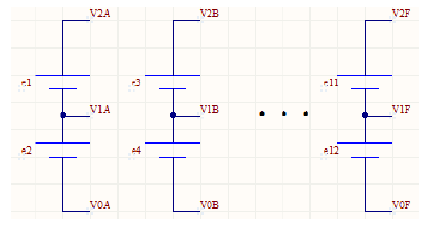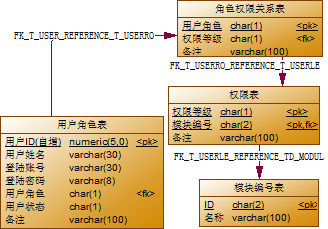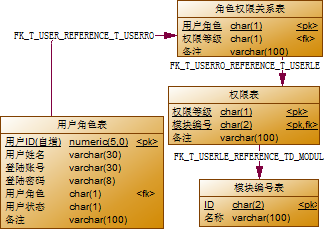纯电动船舶数据采集系统设计毕业论文
2020-02-19 09:13:56
摘 要
随着电动船舶行业的迅速发展,纯电动船舶已经成为发展的主要趋势,为了确保纯电动船舶的运行安全,就必须对各动力设备的工作状态监测。但是由于受国外知识产权保护、关键技术封锁、纯电动船舶系统复杂以及功课核心技术的困难与艰巨性,导致国产纯电动船舶的应用推广不多,系统存在可靠性不高问题。纯电动船舶采集数据种类繁多,数据协议复杂,受传感器技术和试验方法的影响,导致我国纯电动船舶还未完全实现各种数据的采集和入库,为了进一步开展纯电动船舶系统集成、可靠性和信息化研究,本文以中船重工研究所的《内河300客位纯电动船舶建设项目》为依托,开展纯电动船舶的数据采集系统方案研究。
本文通过测点分布和硬件选型分析研究,具体工作内容如下:
(1)对比纯电动船舶与传统动力推进船舶的特点,分析不同动力船舶的优势与不足,对其发展现状进行分析。
(2)对测点分布进行研究,着重讨论了电流、电压和温度的采集方法,以及各测点所使用的传感器选型。
(3)结合Access数据库技术以及VisualC 6.0开发平台等多种信息化技术,对PLC模块进行选型设计,对各功能模块进行详细设计。
(4)对数据采集系统进行流程规划。
关键字:纯电动船舶;数据采集;传感器;系统设计
Abstract
With the rapid development of electric ship industry, pure electric ship has become the main trend of development. In order to ensure the operation safety of pure electric ship, it is necessary to monitor the working state of all power equipment. However, due to the protection of foreign intellectual property rights, the blockage of key technologies, the complexity of the pure electric ship system and the difficulties and difficulties in core technologies, the application and promotion of domestic pure electric ships are few and the reliability of the system is not high. All-electric ship phyletic and various data gathering, data protocol is complex, the sensor technology and test method, the influence of our pure electric ship is not yet fully realized all kinds of data collection and storage, in order to further develop all-electric ship systems integration, reliability, and information technology research, this paper takes the Chinese heavy industry research institute of the construction project of 300 seat pure electric ships in inland water as the backing, in pure electric scheme of data acquisition system research of the ship.
In this paper, the distribution of measurement points and the analysis and research of hardware type selection are carried out. The specific work contents are as follows:
(1) compare the characteristics of pure electric ship and traditional propulsion ship, analyze the advantages and disadvantages of different power ships, and analyze their development status.
(2) the distribution of measuring points is studied, and the collection methods of current, voltage and temperature are emphatically discussed, as well as the selection of sensors used at each measuring point.
(3) combined with Access database technology and VisualC 6.0 development platform and other information technology, PLC module selection design, detailed design of each functional module.
(4) process planning for the data acquisition system.
Keywords: Pure electric ship; Data acquisition; The sensor; The system design
目录
第一章 绪论..................................................................................................................................7
1.1. 研究背景及现状..............................................................................................................7
1.2. 论文研究内容..................................................................................................................8
1.3. 论文结构与内容安排......................................................................................................8
第二章 纯电动船舶动力推进系统概况.....................................................................................11
2.1. 纯电动船舶推进系统的组成 ......................................................................................11
2.2. 船舶推进系统的特点....................................................................................................12
2.2.1. 纯柴油机推进船舶的特点.................................................................................12
2.2.2. 混合动力推进船舶的特点.................................................................................13
2.2.3. 纯电动船舶的特点.............................................................................................14
2.2.4. 各船舶推进系统间的特点比较.........................................................................16
第三章 纯电动船舶数据采集....................................................................................................18
3.1. 传感器选型及要求........................................................................................................18
3.2. 检测系统基本原则........................................................................................................18
3.3. 动力电池组测点分布研究............................................................................................18
3.3.1. 动力锂电池组电流监控模块设计.....................................................................19
3.3.2. 动力锂电池组温度检测模块设计.....................................................................20
3.3.3. 动力锂电池组电压检测模块设计.....................................................................21
3.4. 各测点传感器选型.......................................................................................................23
第四章 数据采集模块选型.......................................................................................................25
4.1. PLC模块选型及布置...................................................................................................25
4.1.1. 主控模块............................................................................................................25
4.1.2. 模拟量I/O模块选型.........................................................................................25
4.1.3. 数字量I/O模块选型.........................................................................................26
4.2. PLC采集站设计...........................................................................................................26
4.3. PLC模块接线设计.......................................................................................................26
4.3.1. PLC电源接线设计..............................................................................................26
4.4. 系统结构.....................................................................................................................26
4.4.1. 功能模块划分....................................................................................................26
4.5. 分布式模块设计说明.................................................................................................27
第五章 采集软件设计构架......................................................................................................42
5.1. PLC应用开发软件介绍................................................................................................42
5.2. 模拟量输入信号的处理..............................................................................................42
5.3. 数据采集程序设计......................................................................................................43
第六章 总结与展望..................................................................................................................44
6.1. 工作总结......................................................................................................................44
第一章 绪论
1.1. 研究背景及意义
随着各国对环境问题的不断重视 ,为了减少不可再生能源的使用量,以及追求经济效益的目的,纯电动船舶逐渐成为了研究的热点。船舶电力推进即采用电动机作为船舶主机,
如果风和帆是最初的海上推进动力,那么在经历了内燃机和热涡轮机械等类似的传统机械推进方法之后,电力推进已经作为一种最为现代的海上推进方式出现在人们的视野中。就目前来说,电力推进已经成为成为一种备受关注的船舶动力技术。
对于电力推进来说,可以使用不同的能源作为其能源动力,例如热机、电池等。电池动力推进是指在整个推进中以电池作为主要能源或主要能量库的动力推进技术,而电池同时也作为船舶电站中的中心环节。采用这种技术的船舶就可以被称作是电池电动船舶或带电池的电动推进船舶。
除了蓄电池,超级电容器和飞轮也可以作为电力推进的电力源。其中飞轮电池的应用范围较广,可以在高速工作场合中使用,但是同时存在着缺点,就是长期难以储存能量。超级电容器的特点是循环寿命长和工作温限宽,其缺点也比较明显,就是质量和能量密度低。目前,因为它们的这些特点,只能用作电力转换器。因此,综合以上各种原因,只有蓄电池可以作为现在主要储能装置。
蓄电池是一种化学能源,具有环保,高效,安全,可靠,运行稳定等优点。 然而,由于其能量来自化学反应并且电流来自带电粒子的运动,因此能量密度低于石油和其他燃料的能量密度。 电池可单独用作电源或与其他能源混合使用。[1][1]
蓄电池电动船舶以电代替油,可谓是一类新的的能源模式,是一个系统工程,需要在能源整体结构及具体使用领域进行相应配套,其发展现状及未来技术趋势如下:
1)整个世界都在提倡节能减排,其符合发展方向,并与其他新能源技术共同发展;
2)纯电动船舶具备较高静特性,适合于短途旅行、渡船等内河船舶;
3)电池与太阳能和风能具有极好的匹配性能。在新能源的支持下,利用各种清洁能源,开发出新的动力推进技术;
4)与传统的热机推进相比,电力动力推进具有控制准确的优点,可以与永磁无刷电动机相匹配,形成高效的电力动力推进方式;
因此,蓄电池必将在船舶电力推进领域得到迅速发展,其发展方向和过程与新能源汽车非常类似,特别是在中小型船舶领域,具有广阔的前景。
1.2. 论文研究内容
本文从四个方面对纯电动船舶数据采集系统进行研究和设计。
以上是毕业论文大纲或资料介绍,该课题完整毕业论文、开题报告、任务书、程序设计、图纸设计等资料请添加微信获取,微信号:bysjorg。
相关图片展示:

